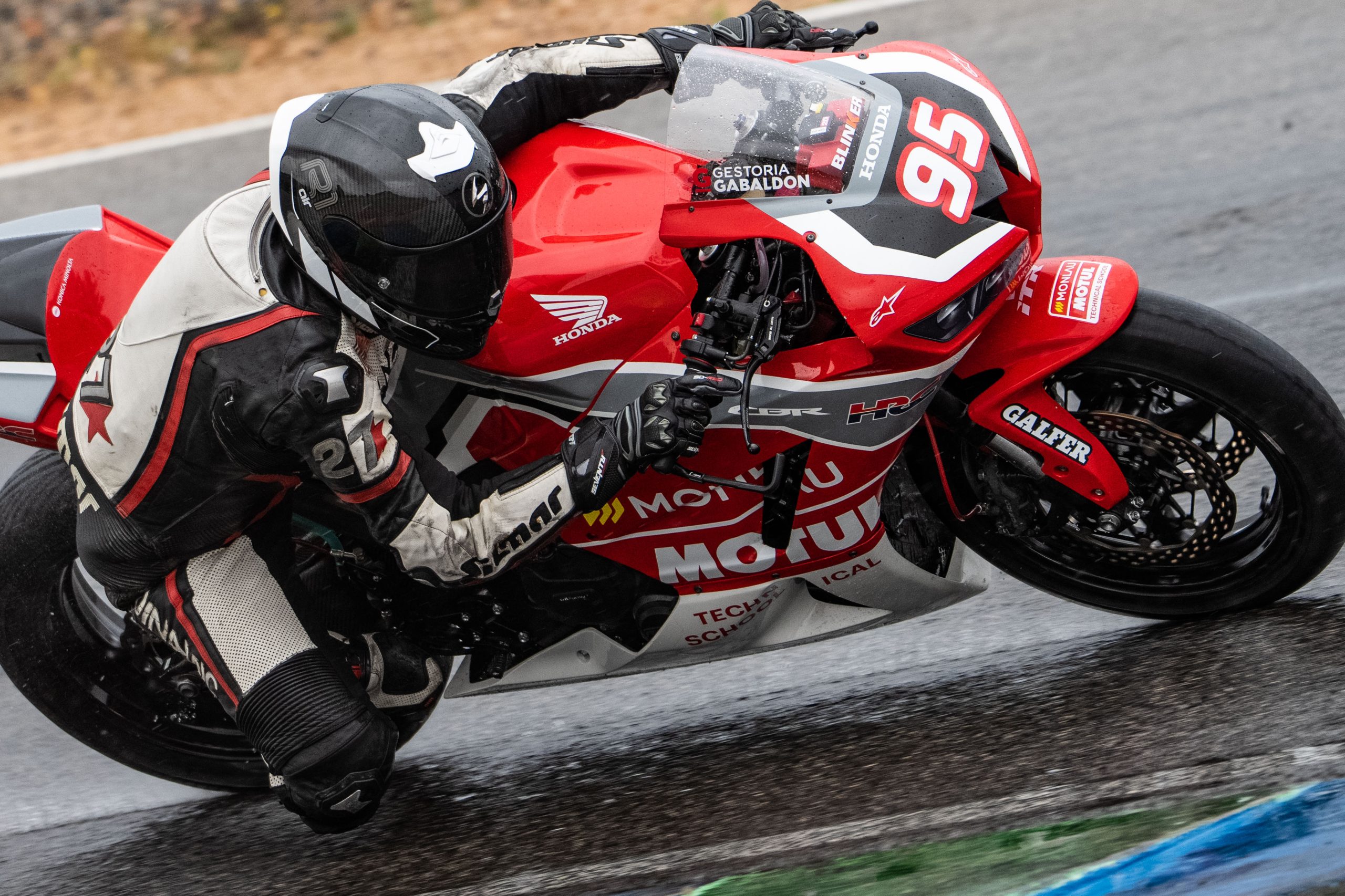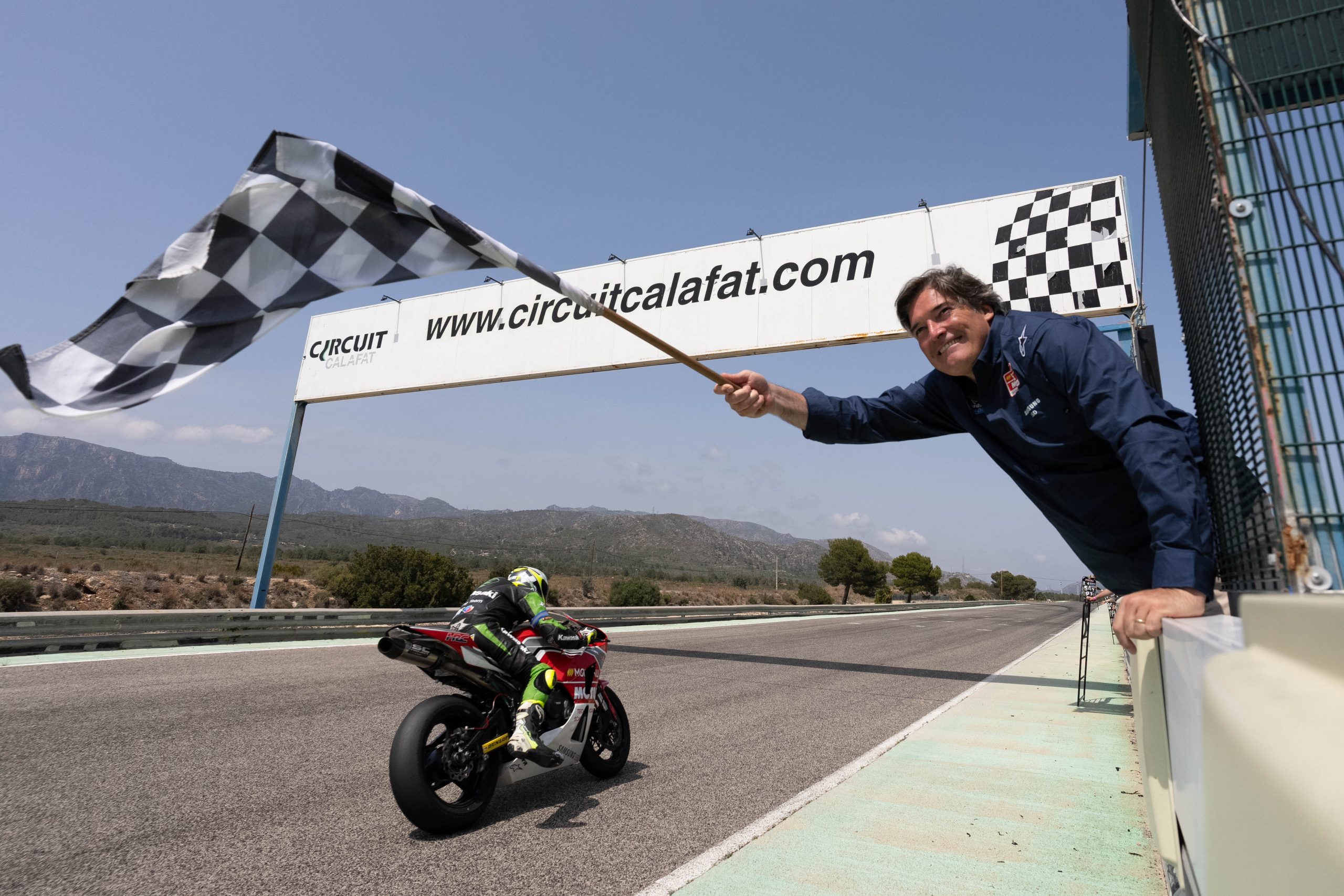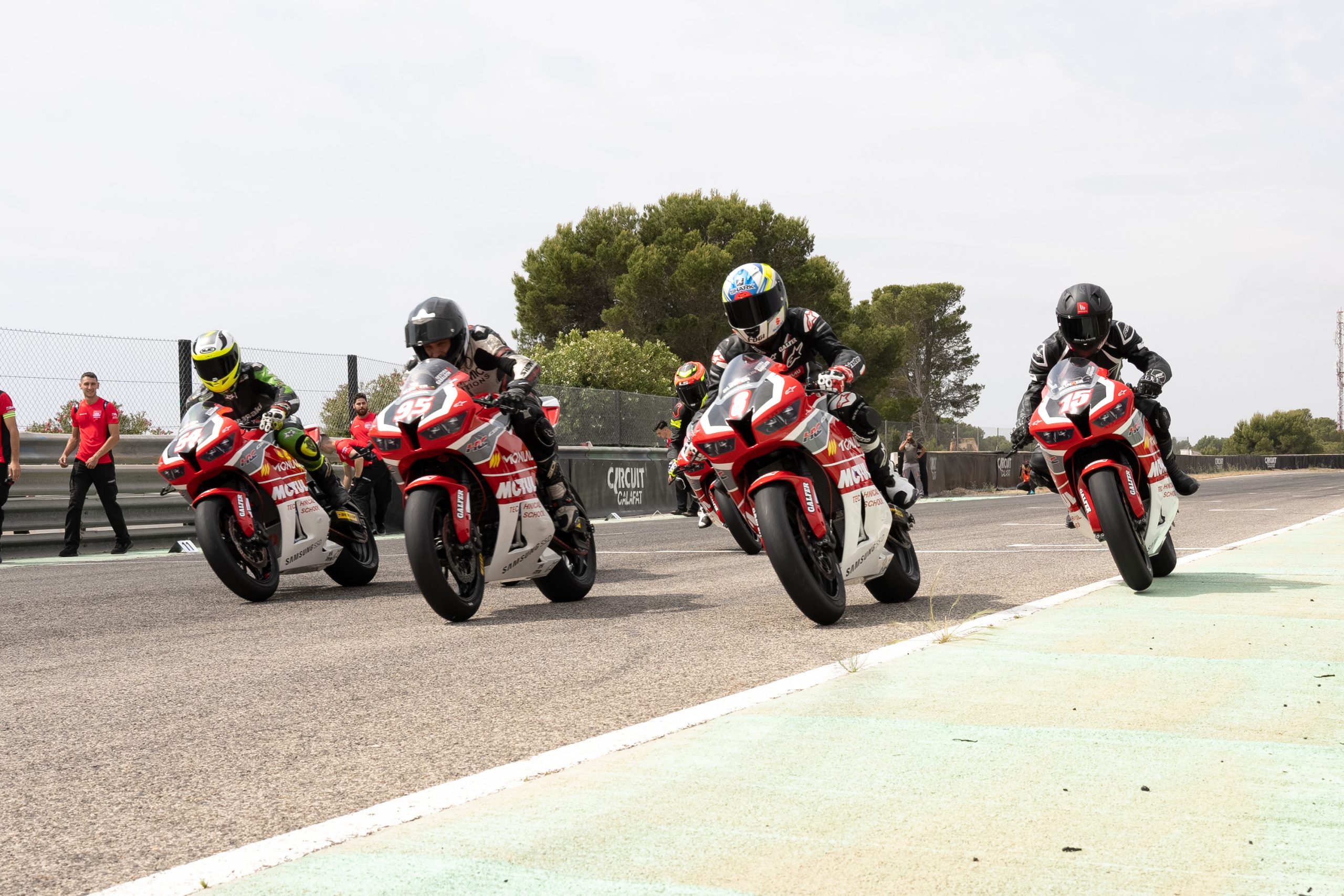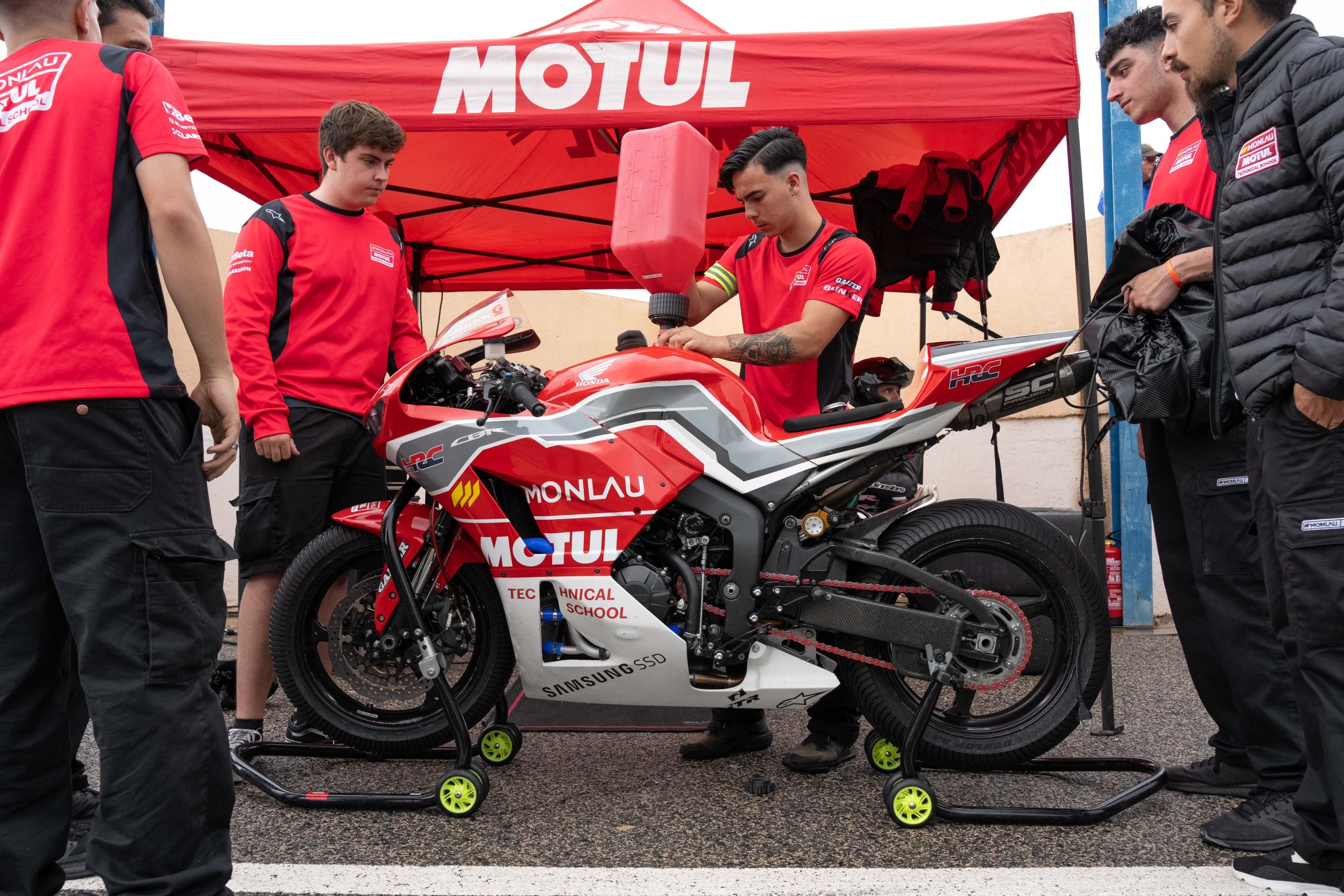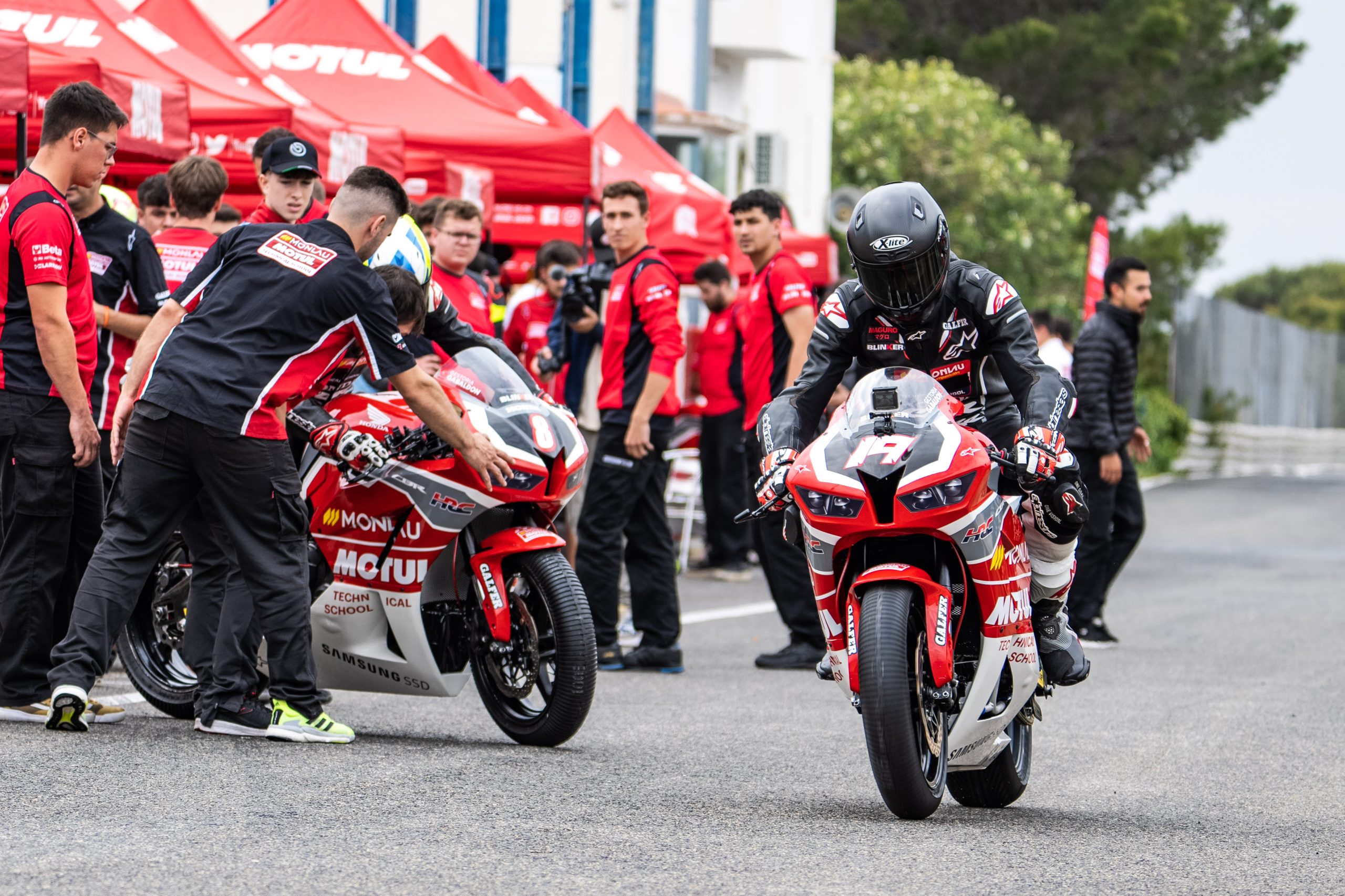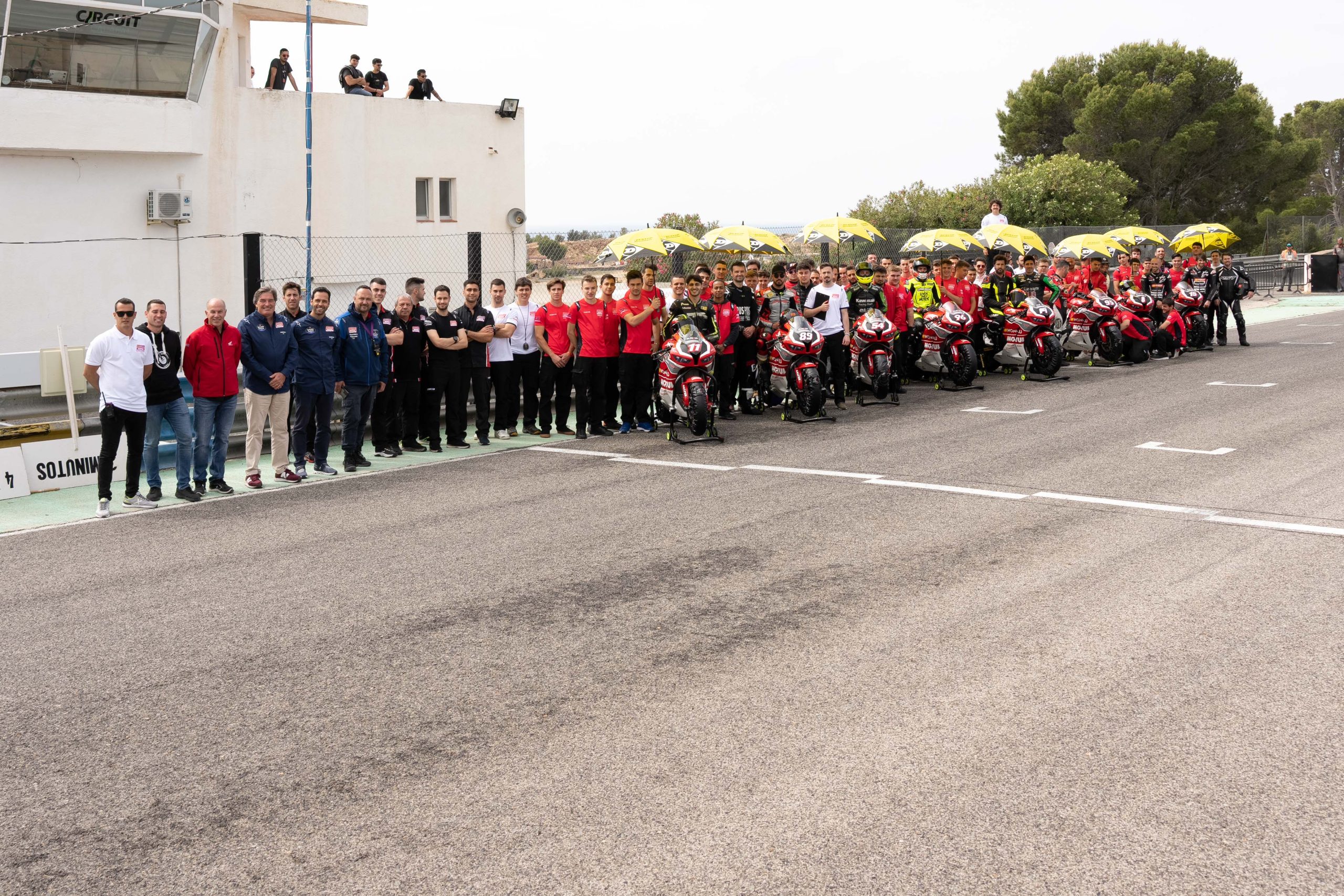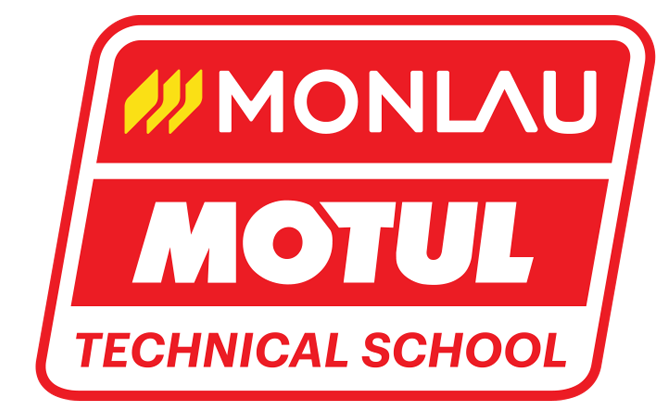- The 16 participants competed for relays divided into eight teams, each with a Honda CBR600RR MFV5 previously mounted from scratch in the classrooms-workshop of the center by the same students.
- The students of the last year of Motorcycling Mechanics of Monlau Motul Technical School underwent a final examination before becoming professionals in an endurance race that was their final project of studies.
- The test, held in the circuit of Calafat with a duration of 4 hours, had the focus on the pit lane, where students had to demonstrate their learning over two years of training solving all incidents and technical operations that arose.
- “We are very proud of a school project that is unique in the world. It is a test set to be decided in the pit lane with the skill of the students, and where they begin to develop the role that will have in the future as professional mechanics,” says Jaime Serrano, general director of Monlau Motul Technical School.
The Monlau Motul Endurance Race is consolidated as a unique event in the field of training in racing mechanics after surpassing all expectations in its fifth edition. On his usual stage, the Calafat circuit, and for four hours, Students of Monlau Motul Technical School’s final year of Motorcycling Racing Mechanics were able to apply their knowledge and skills in a race that represents their final project of studies and the final exam before becoming professionals.
The event, which mobilized more than a hundred people on May 25 and 26, allowed students to demonstrate the accumulated learning in real practices in circuit and classrooms-workshop, where months ago they configured the eight Honda CBR600RR MFV5 that would later be protagonists in the race. Beyond the show offered by the pilots, the lights were in the pit lane , where the students were in charge of technical assistance, setup, logistics, refueling operations and the strategy of pit stops, this last aspect with the impeccable help of the students of the Master of Engineering in Motorsport of Monlau Motul Technical School.
This year’s edition also had as added difficulty changing weather conditions. The rain was the protagonist on Thursday 25, dedicated to free training and qualifying session, and forced the teams to use water tires. On Friday 26, however, it was marked by the sun.
With eight teams and 16 drivers in competition, the Monlau Motul Endurance Race was contested with the endurance regulations of the FIM and under the timekeeping and live timingof Al Kamel Systems. As in previous editions, some of the moments of maximum tension were experienced in the six mandatory pit stop (mandatory pit stops). Some of them were executed to perfection, as demonstrated by the team Los Makinas (number 89), who completed the fastest of the competition in a spectacular time of 3 minutes and 37 seconds.
Although the action in the pit lanewas first level, it was not for less that lived in the asphalt of Calafat. After four demanding hours of competition, marked by equality and excitement between the teams, the first to cross the checkered flag was the ALM Team, with the number 11, which managed to complete 128 laps with its drivers Jacopo Cretaro and Maria Calero, the team leader, Joan Alomar, and his companions Genís Ribera, Gerard Llena, Marçal Costa, Daniel Jaumandreu and Guillem Martín.
A clear reflection of the equality is the only lap that separated the winners from the second classified, Los Makinas, who completed 127 laps with the number 89 thanks to their two drivers, Álex Rubio and Fernando Artola, and the pit work of Lucas Casado as team leader, and his teammates Alex Angrill, Iñaki Pizarro, Alejandro Del Pozo, Antoni Fernández and Nil Larios. The third position on the podium was taken by Italcat, where riders Marc Guillamet and Edu Fernández made 126 laps with the Honda CBR600RR MFV5 on the 54th. The team was completed by Lorenzo Capriotti, Federico Proietti, Fernando Casares, Pau Monells and Raúl Martínez, along with Edoardo Palmieri as team leader.
Precisely, the third position in the general standings was not the only recognition won by the Italcat team, which also won the Monlau Motul Method prize. Through this award, the Barcelona center places value on the work done before the race, such as the assembly of the motorcycle, and technical aspects, image and discipline of the project.
“We have a close and long relationship between Honda and Monlau, and now we share this project of training students to become part of the elite of different motorsport disciplines. The great presence of Monlau students in the MotoGP World Championship, Superbikes and many other competitions is well known,” says Albert Cavero, Communications Director at Honda España.
Jaime Serrano, general director of Monlau Motul Technical School, stresses that “all subjects of the curriculum are conveyed through this career. We are very proud of a school project that is unique in the world and that is configured to be decided in the pit lane with the skill of the students, and where they begin to develop the role they will have in the future as professional mechanics”.
From inside the pits, the student and leader of the winning team, Joan Alomar, defines his experience: “We started with a lot of nerves, but with the passing of the hours we calmed down and we worked very well as a team. For me, organization and consistency are key. Everything has to be prepared in advance. I find it a hard experience, but very interesting, and it is ideal to finish the course”.
After five years of consolidated success, the Monlau Motul Endurance Race has become the biggest end-of-year project of a school of racing mechanics, and an immersion of young mechanics in the reality that awaits them in this profession. All this thanks to the leaders of Monlau Motul Technical School, who are already working on the next course to celebrate a more spectacular edition.
Technical equality with trusted partners
On the other hand, as happened in the previous four editions, all motorcycles included the same components. They also shared design, with an endurance aesthetic inspired by Honda’s most iconic models. The fairings were from ITR Racing, and in the ergonomics section, we should highlight the multiadjustable footrests and the semibars.
The eight Honda CBR600RR MFV5 featured EVR anti-rebound clutch, Sprint Filter air filter and SC Project exhaust. For the brakes, an Accossato pump was chosen, with pads, metal hoses and 310 mm Galfer discs at the front and 220 mm at the rear, while the suspensions were formed by a Showa inverted telescopic front fork with HMAS cartridge, as well as an Öhlins shock absorber with gas reserve in bottle, rebound and adjustable length, and adjustable compression and load adjustment from the external reservoir. Likewise, the switchboard was entrusted to Rapid Bike Racing, with ignition map, injection map 8 injectors, OverRev limiter, engine brake, traction control, launch control and quickshifter. Data acquisition was supported by 2D technology, with front suspension sensor, rear suspension sensor, GPS, Mini dash, front wheel speed sensor, 8 Spike sensors, memory module, logger, interface and broadband Lambda probe.
